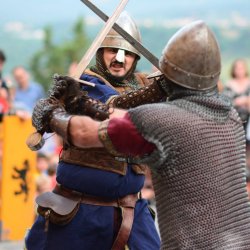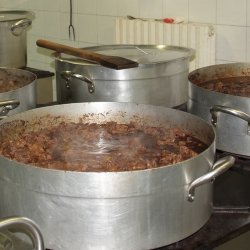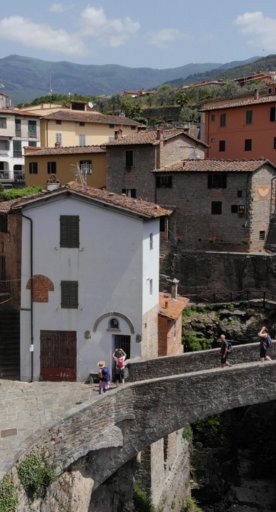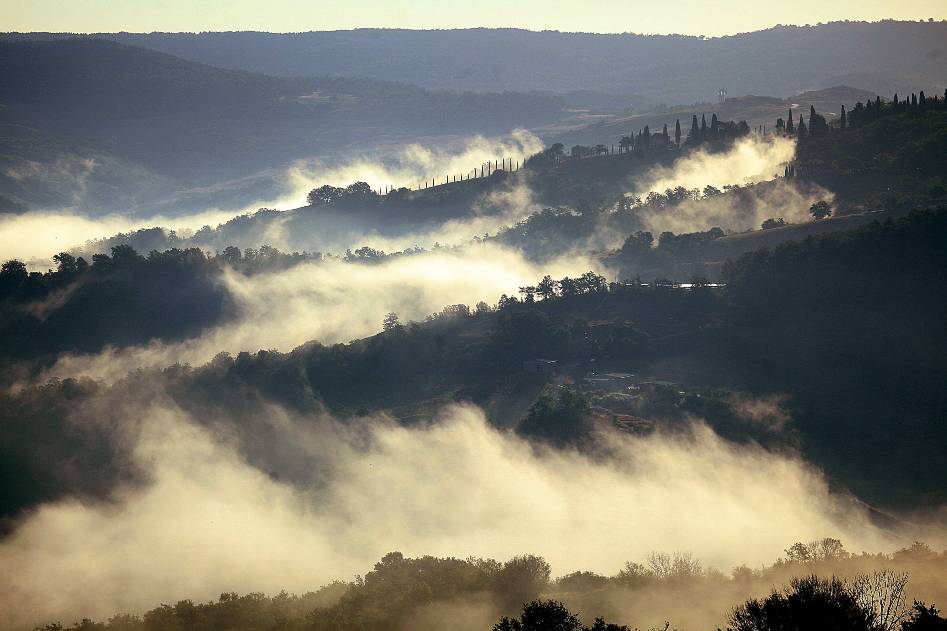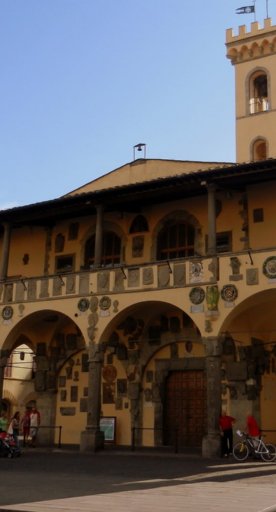3 things not to miss in the Valdarno
Nature, art and traditions in one of the most fascinating areas of Tuscany
Between Arezzo and the Florentine area, there's a spectacular valley crossed by the Arno. It's one of the areas that has been able to manage production needs with great balance and conserves valuable artistic and environmental treasures. This is the Valdarno.
Let's discover 3 gems not to be missed on a journey through this lucky land.
-
1.Balze del Valdarno
-
2.Loro Ciuffenna and its mill
-
3.The Annunciation by Beato Angelico
Balze del Valdarno

With rocky peaks, pinnacles that can reach 100 meters in height, and deep gorges, in the upper Valdarno (in particular in the municipality of Reggello) the clayey rock formations known as Balze give life to unusual and fascinating views that you would expect to see on a journey to discover the Grand Canyon in American parks.
Also called "smotte", the crags represent a natural spectacle that amazes anyone who witnesses them: even the greatest genius of all time, Leonardo da Vinci, was so enthralled that he took the unique aspects of this landscape and used them as the background for his most famous work, the Mona Lisa.
The Balze are not only a spectacular landscape background, but also a habitat with unique naturalistic value protected by the Natural Protected Area of Local Interest. Explore them at a leisurely pace to appreciate a territory with unique geological characteristics and enjoy a beautiful day of trekking and nature.
The path of the Zolfina stream is one of the hiking trails that allows you to better admire the spectacle of the Balze. It's an easy ring-route that starts and ends in one of the most beautiful villages in Italy, Castelfranco di Sopra, and takes its name from a spring of Zolfine water touched on by the itinerary. The valley has the typical tones of the Tuscan countryside, with orchards and vineyards. Towards the mid-point of the route, you will find a road that leads to the small and delightful perched village of Piantravigne.
Loro Ciuffenna and its mill

Imagine a village where time seems to have stopped when the energy of water was still used. Here, on the slopes of Pratomagno, the Ciuffenna river still moves the blades of a mill built on a boulder. It's one of the oldest still functioning water mills in Tuscany, and the only one left of the 14 mills along the river. Dating back to the year 1000, it's still used for the production of wheat, corn and chestnut flours.
Loro Ciuffenna - one of the "most beautiful villages in Italy" - is concentrated around this mill and the civic tower whose clock has marked the days for locals for centuries. A Romanesque stone bridge known as the ponte vecchio joins the two banks of the river. A pleasant walk can be taken along the streets and walkways that flank the flowing water, with a family atmosphere in this small rural town that's surrounded by woods.
The Annunciation by Beato Angelico
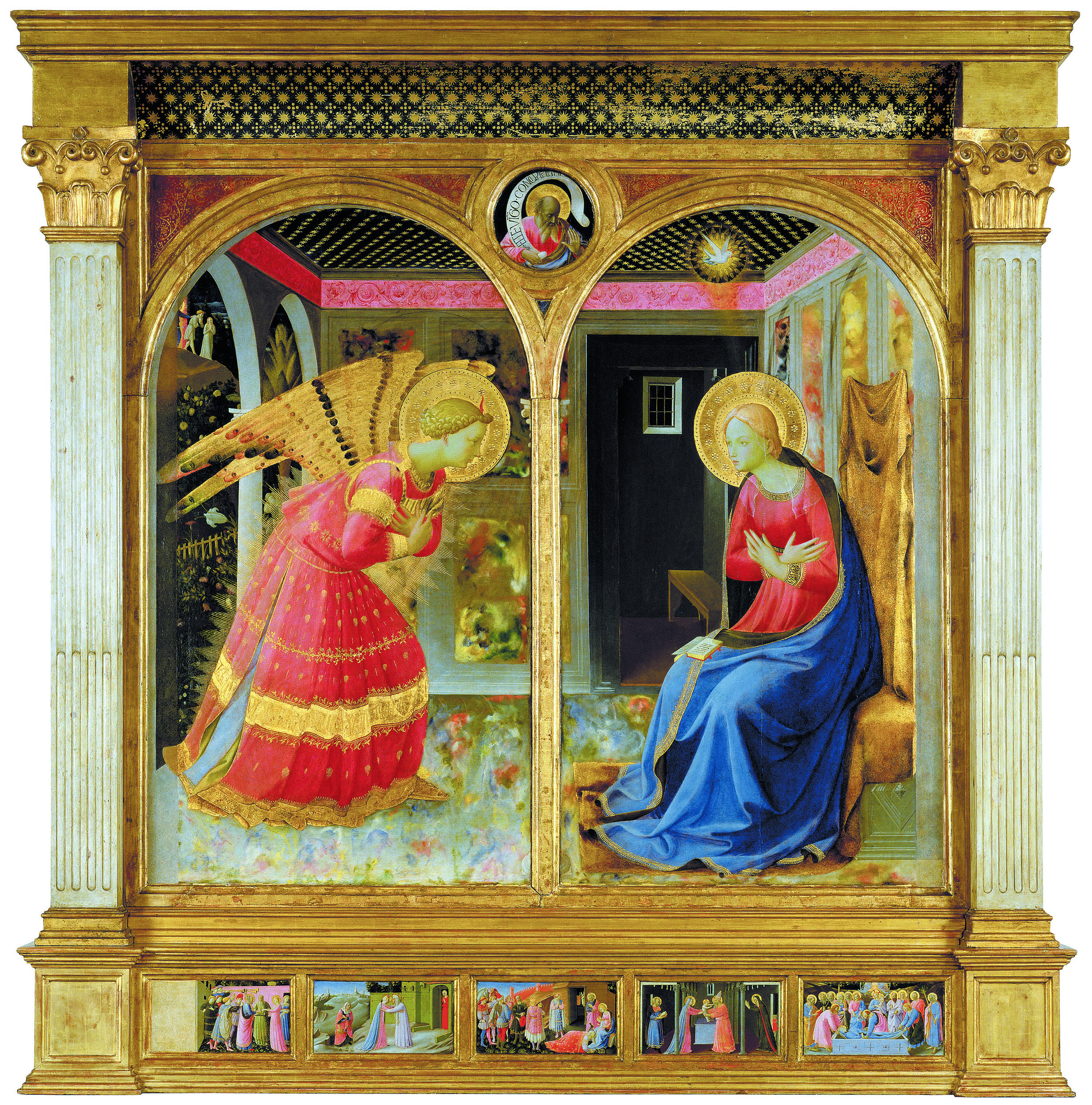
Beato Angelico, defined by Vasari as an "excellent painter" and "greatly religious", was born in Mugello and trained in Florence, but it's in San Giovanni Valdarno that one of his greatest masterpieces can be admired: The Annunciation.
The Museum of the Basilica of Santa Maria delle Grazie hosts numerous paintings from churches and convents of the city and the area, in particular dating back to the fifteenth and seventeenth centuries. The Annunciation is the most moving work of the entire collection. It was created around 1430 and comes from the convent of Montecarlo.
Recalling some features of the more famous Cortona Annunciation, Beato Angelico represents the scene under a finely decorated portico with large arches that open onto a bucolic panorama. The archangel Gabriel is seen with a red and gold-decorated robe, portrayed in the gesture of a bow in front of the Madonna who is also bent forward with her hands to her chest in an almost mirror-like pose. The face of the Virgin is framed by a halo and has characteristics that seem to defy time with her modernity.
Compared to the Cortonese Annunciation, that of San Giovanni expresses greater sensitivity in terms of colours and light, with a sense of balance and perspective that focuses our attention on the Annunciation scene and attracts our gaze in a magnetic way.
Today, we can admire this masterpiece thanks to the people who worked to hide it and protect it during raids that took place during the Second World War.

